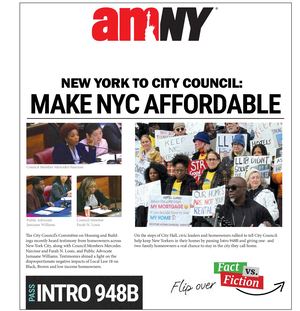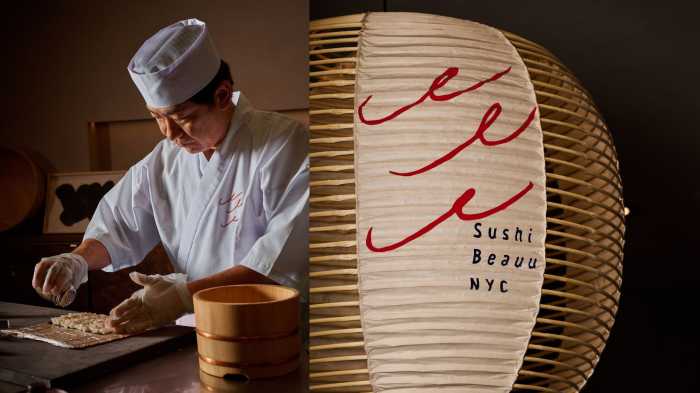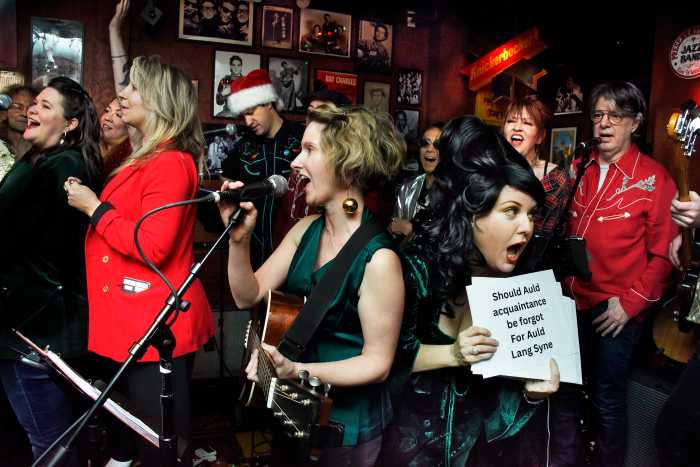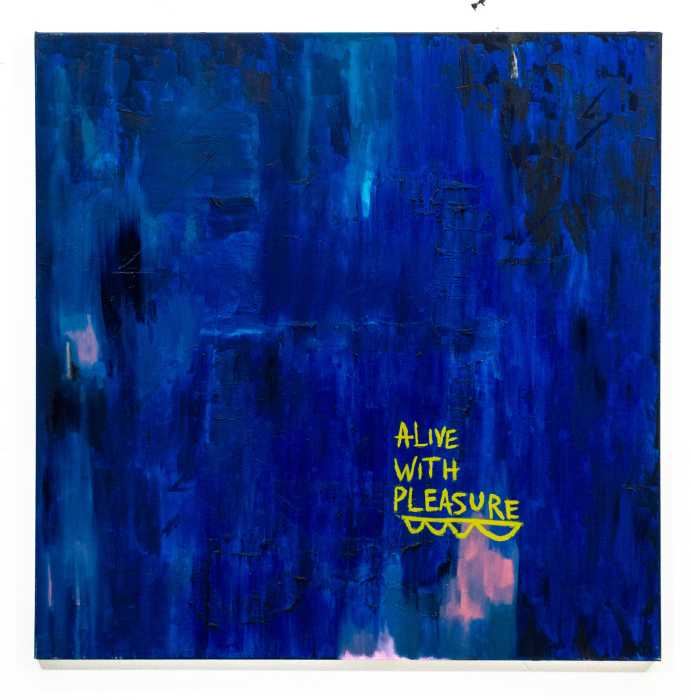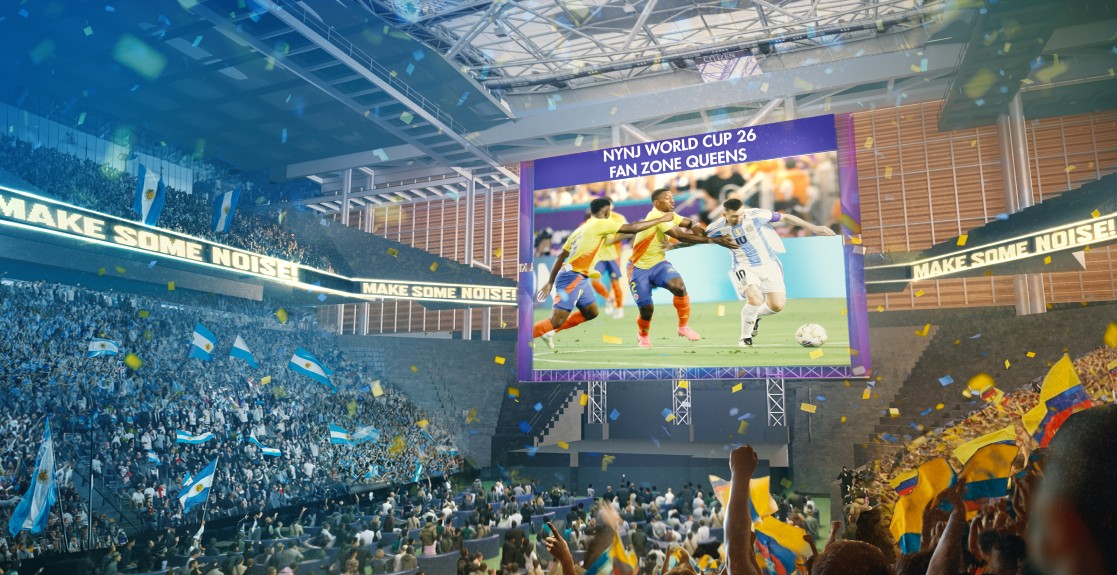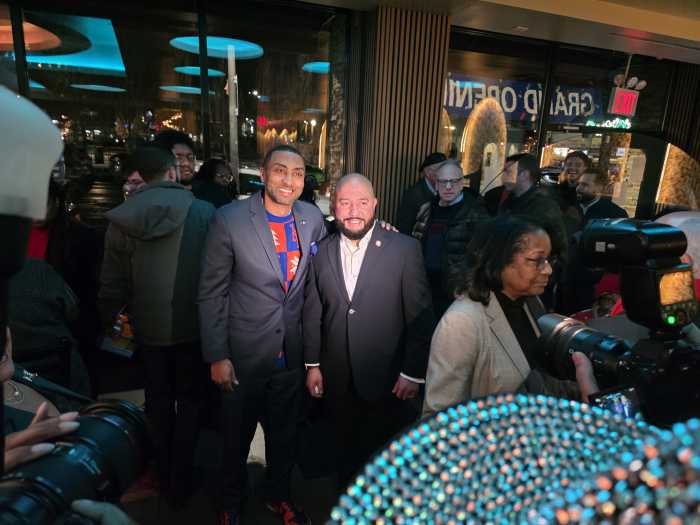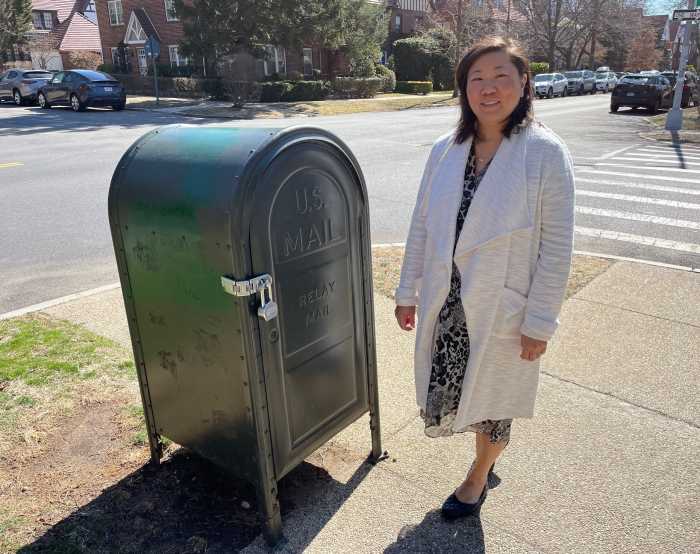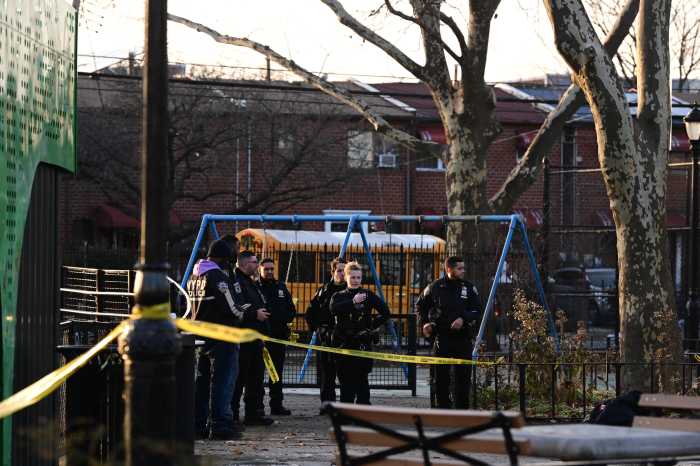By Terri Cude and Martin Tessler
New York University’s latest salvo in its battle to take over what’s left of Greenwich Village is an interesting show for the benefit of the media. At a Sept. 15 press briefing, N.Y.U. announced that it would seek to acquire “only two” of the seven city-owned open spaces on the superblocks — the one in front of Coles Gym where the Mercer-Houston Dog Run is located, and along Mercer St. between W. Third and W. Fourth Sts. where N.Y.U. built its co-generation facility beneath what was a mature, tree-filled area and is now a public park with seating and shallow-rooting trees and plants as a roof garden above its power facility.
The university intends to erect an 800,000-square-foot building (plus 200,000 additional square feet underground) on Mercer St. between Houston and Bleecker Sts., to include more than 1,000 dorm beds, a few hundred hotel rooms, a supermarket, retail stores, classrooms, faculty housing and more.
In addition, N.Y.U. announced that it would support the transfer of two other parks — LaGuardia Park run by Friends of LaGuardia Place with the statue of our former mayor and a stately grove of decades-old trees, and Mercer Playground run by LMNOP where children can ride their bicycles and scooters, skate, run and more — to the city’s Department of Parks and Recreation. However, N.Y.U. seeks easements to allow it to build beneath, use as access and run and park construction equipment on these lands. This means that our parkland will be destroyed, since you cannot build beneath without removing everything on top. Farewell, mature trees, parkland, play space and open green areas; hello, construction sites, diesel fumes, dirt, noise, vermin and all that goes with them.
A strip of land not mentioned is the one where the LaGuardia Corner Garden and Time Landscape reside between Houston and Bleecker Sts. N.Y.U. could attempt to site the displaced dog run on the Time Landscape, and is not supporting a transfer of that entire strip to the Parks Department. This worries the gardeners, some of whom have tended their areas for decades — and all those that enjoy these oases in the city — since their license can be revoked with little notice.
The seven open-space strips on the South Village superblocks are a lush green legacy of the Village’s successful battle against Robert Moses’ attempt to widen our streets to be on ramps for his planned expressway going through the Washington Square Park Arch. Most of these spots are now community amenities — the peaceful oasis of a beautiful community garden, a unique playground for children past the toddler stage, a verdant village green, a dog run and more.
The Community Action Alliance on NYU 2031 (CAAN) and Community Board 2 gathered together with our area’s elected officials last December to clearly state that N.Y.U. could not have these green strips, and further, for their protection in perpetuity, they should all be transferred to the Parks Department. The intent wasn’t simply to change the name on the deeds, but to preserve and permanently safeguard these community-created amenities.
If N.Y.U.’s acquisitions and easements go through, our residents may eventually get some semblance of what might be called parks on the two strips that will be mapped to the Parks Department, with young growth that will, at best, take decades to reach anywhere near the majesty — and air-cleaning properties — of what was lovingly planted by Villagers so many years ago. But we certainly won’t get that before many years of our gardens and recreation spaces being converted to filthy, noisy, diesel-filled construction sites, with at least a generation deprived of their use.
The easements would give N.Y.U. the ability to dig through these new parks to their underground sites, making the parks unavailable to our community yet again. In addition, if N.Y.U. is allowed to acquire the land in front of Coles Gym, the new “Zipper Building” would completely cover the strip that N.Y.U. promised to maintain as a condition of building Coles (which itself replaced an open space field used for sports).
A last point: N.Y.U. is not a good steward of parkland. Even a glance at the sunken and unusable reflecting garden and children’s playground on Mercer St. between Houston and Bleecker Sts. shows that N.Y.U. does not keep its commitments to maintain community parks. Yet a look at LaGuardia Corner Garden, Friends of LaGuardia Place’s LaGuardia Park, LMNOP’s Mercer Playground and the dog run show how well the community takes care of its parks and open spaces.
N.Y.U. claims that it’s giving the community what it wants. That is obviously not true. N.Y.U. is taking away green spaces that our community desperately needs and replacing them with inside-facing open space that does not benefit the public, but only serves N.Y.U.’s private needs — which we certainly did not ask for and cannot tolerate.
We can only hope that N.Y.U. stops this attack on our precious open space, and trust that our elected officials who will vote on the NYU 2031 plans are not fooled by N.Y.U.’s claims so thinly masking an utterly unjustifiable and unnecessary takeover of our public open spaces. This latest N.Y.U. ploy proves the long-held adage that you cannot serve two masters. What N.Y.U. is claiming as being good for the public is solely beneficial to its private interests, and no better example exists than this attempt to portray this as a “win-win” when it is anything but a loss for the public’s interest.
Cude and Tessler are co-chairpersons, Community Action Alliance on NYU 2031
